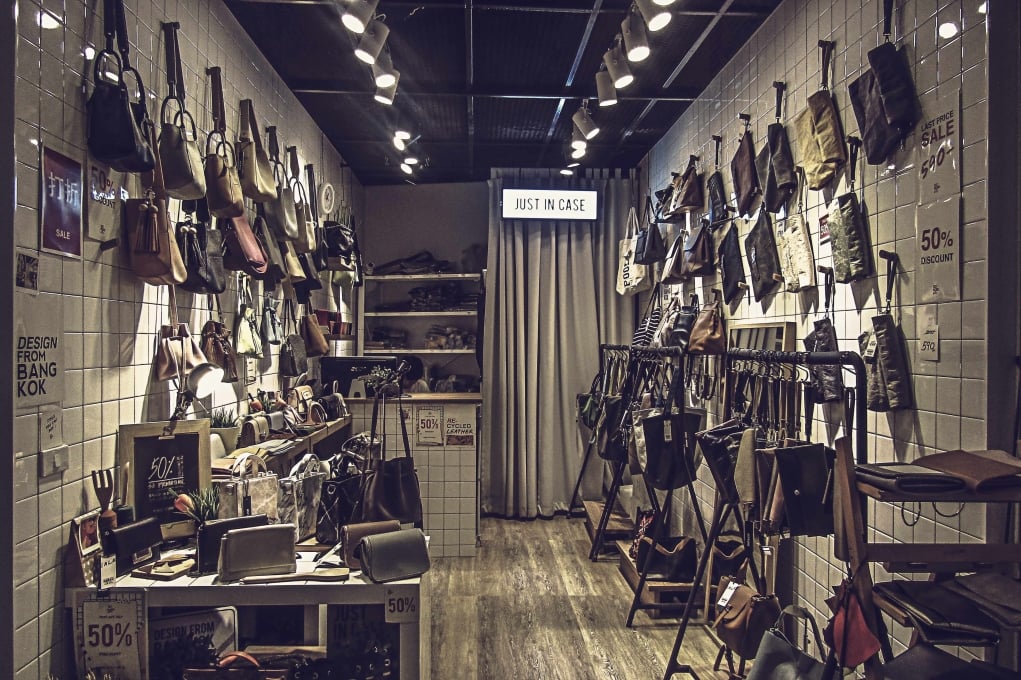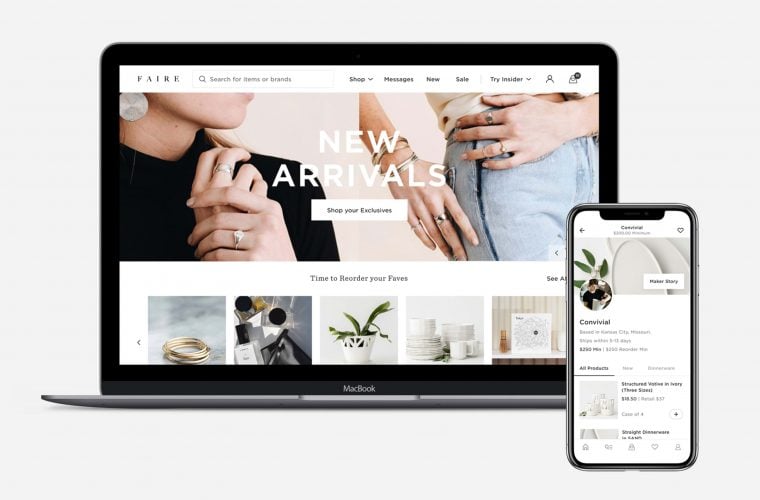
13 Retail Marketing Tips For Small Businesses In 2023
The retail landscape has changed drastically over the past few years as businesses continue to ride the wake of a subsiding pandemic. Contactless shopping, delivery, and curbside pickup — once a public health necessity — have now turned into conveniences many consumers regularly expect. About 37% of people say they use contactless delivery more than they did pre-pandemic. This is just one of the many ways shopping has evolved.
So, what is your small business doing to keep up with the changing demands and latest trends? Our tips for retail marketing will help you level up in 2023 for better sales and happier customers.
Stock Private Labels
Trends show consumers continuing to prioritize value over brand names, meaning businesses that are stocking private labels are seeing sales boost — particularly for the consumer packaged goods (CPG) sector. Nearly 80% of U.S. adults reported buying or wanting to buy private label goods in apparel, pantry, personal care, and other categories.
Take it a step further: For a relatively hands-off online strategy, it doesn’t get much easier than using Amazon’s Fulfillment by Amazon (FBA) program. Research trending products in the “New Releases” and “Movers and Shakers” columns and scope out their prices to stay relevant and competitive.
Support Other Local Businesses Through Partnerships
When local businesses support other local businesses, everybody wins. There are so many different ways you can partner with your fellow small business owners. Here are a few ideas:
- Post an Instagram giveaway with a bundled prize package including goods and services from both your businesses in exchange for follows.
- Co-host an event in a shared space with a next-door-neighboring business.
- Don’t forget about local charities you could spotlight or donate a percentage of your proceeds towards.
Take it a step further: If your business partnership involves serious time or investment from either party, get it in writing. This will ensure all parties are protected in case of a disagreement or confusion.
Amplify Your Associates’ Reach via Social Marketing
If you’re making the right hiring decisions, your sales associates should be prime examples of who you’d want as brand ambassadors. Leverage their established social media following by having them promote your products or services on their social channels. This requires minimal effort and feels genuine since your team is likely already using and loving your products.
Take it a step further: Incentivize your team with a rewards program. For example, distribute unique discount codes for each associate to share with their followers. The one whose code is used the most in a month gets a bonus or free product.
Offer Customized Product Options
It’s not enough anymore to just offer customizable colors and styles. Many consumers, especially those shopping for recreational and hobby-related goods, expect unique personalization and customization options. Some great examples of businesses leading the charge in customization offerings include:
- Crafting companies like Paper Source’s customizable stationery or Papier’s name customization option for journals
- Kitchen suppliers like Hedley and Bennett’s apron embroidery customization or MadeIn’s custom knife engraving
- Shampoo companies like Aura and Ravel that let you customize your own formula and print your name on the packaging
Take it a step further: Depending on what you sell, consider offering wholesale or commission orders for people looking for one-of-a-kind work.
Develop an Omnichannel Digital Sales Strategy
Put simply, an omnichannel sales strategy means you sell wherever your customers buy. This means going beyond your brick-and-mortar and website stores by selling on Amazon, a proprietary app, directly on social media apps like the Instagram Shopping tab, and anywhere else your customer is buying.
Take it a step further: Your physical store can act as a fulfillment center for orders placed on other channels, like “click-and-collect” business models.
Additional Considerations for Brick-and-Mortar-Only Retail Businesses
In addition to general retail marketing best practices, there are a few things retail-only business owners can and should do to boost sales:
Invest In Social Media, But Don’t Forget About Yelp and Google
A solid social media presence is a must for any modern business, but it’s easy to forget about Yelp and Google Reviews. About 63% of people check Google Reviews before visiting a business, so make sure yours are a great representation of your satisfied clientele. Yelp comes in second, with 45% checking the site before visiting.
Take it a step further: Make sure your audience knows you’re on Yelp by including the icon wherever you display your social media links, like an email newsletter or signature.
Implement Geo-Targeted Ads and Local SEO
Geo-targeting involves tapping into metadata about customers’ locations in order to deliver them relevant content and ads for products and stores that are near them. This info is collected from numerous sources, including search engine queries, social media posts, IP addresses, mobile app settings, and more.
Investing in local SEO will also bolster your local digital marketing efforts. Local SEO best practices suggest optimizing for “near me” keywords. To do this, make sure your website is optimized for mobile (a big ranking factor for Google) and that your Google My Business profile is up-to-date.
Take it a step further: Keep a pulse on local events that bring in extra tourism to your area, and double down on your local retail marketing efforts during these times for a wider audience pool.
Optimize Your Point-of-Sale Display and Retail Space
It should be quick and easy for your customers to find your POS for checkout. Make sure signs are clearly labeled and your store flows naturally to avoid confusion. Your POS system should accommodate all major payment methods, including digital wallets, mobile pay, buy-now-pay-later, and more. The last thing you want is to lose a sale because you’re not able to accommodate a certain payment method.
Take it a step further: Add a customer loyalty program at the counter that’s easy for shoppers to sign up for, ideally just requiring a phone number.
Level Up Your Curb Appeal
Curb appeal for physical retail stores goes beyond a stellar window display. Other tips to increase your store’s attractiveness to passers-by include:
- Ensuring you’re complying with accessibility standards
- Making sure your parking area is well-lit and easy to find
- Sweeping your front entrance so it’s clean and clear
- Keeping exterior paint refreshed and blemish-free
- Including greenery (if it’s on-brand)
- Including accommodations for cyclists and dog owners
- Making sure your signage and displays clearly communicate what your business does
Take it a step further: Offer to sweep up your neighbor’s doorsteps if your business is cozied next to other shops.
Additional Considerations for Online-Only Retail Businesses
If your business operates solely in the digital realm, here are a few more things to consider for retail marketing:
Lean Into Your Email List
A good email list with loyal customers is valuable to any business, but for online-only businesses, it’s your lifeline. Email campaigns offer a direct-to-consumer communication channel that only takes a few clicks to convert into sales. You should constantly be growing your list by creating gated content that requires an email to access or by running giveaways that require an email subscription for entry.
Take it a step further: Many companies offer free email marketing courses perfect for small business owners with limited time and resources.
Optimize for Mobile First and Desktop Second
While this is nothing new, Google continues to put emphasis on mobile optimization. In 2020, it announced mobile-first indexing. Simply put, this means Google’s bots will crawl your mobile website version before the desktop one, and if it’s not optimized, your site’s SEO could be severely penalized. Shopify predicts 42.9% of all ecommerce purchases will be made on mobile by 2024 — so don’t wait to optimize if you haven’t already.
Take it a step further: Most content management software (CMS) like WordPress or Shopify will offer built-in mobile optimization, but make sure to consistently test the display — ideally across multiple mobile operating systems.
Send Abandoned Cart Email Incentives
Most email service providers like Mailchimp offer abandoned cart email templates that allow you to automate reminders to customers who have added items to their carts but haven’t made a purchase yet. In 2022, about 49% of abandoned cart emails were opened, and the click through rate was a little over 8%.
Take it a step further: Consider adding a small discount incentive to nudge customers towards completing the buying cycle.
Plan a Shoppertainment Calendar
“Shoppertainment” is a quippy term that simply means making your online store more engaging for customers. Shoppertainment events can include contests, interactive “spin-the-wheel” games, livestream shopping, quizzes and trivia, and anything else you can imagine that gamifies your shop.
Take it a step further: Use TikTok to sell trendy products via livestream. A study showed 43% of heavy app users feel that advertising blends in with content, so it’s a great platform for interactive sales that won’t feel too promotional.
The Bottom Line
Whether digital, brick-and-mortar, or both, your retail business needs to keep up with consumer trends to beat out the competition. A solid retail marketing strategy and authentic interactions with your audience will ensure your ever-growing customer base trusts and appreciates you as a local, independent business.














